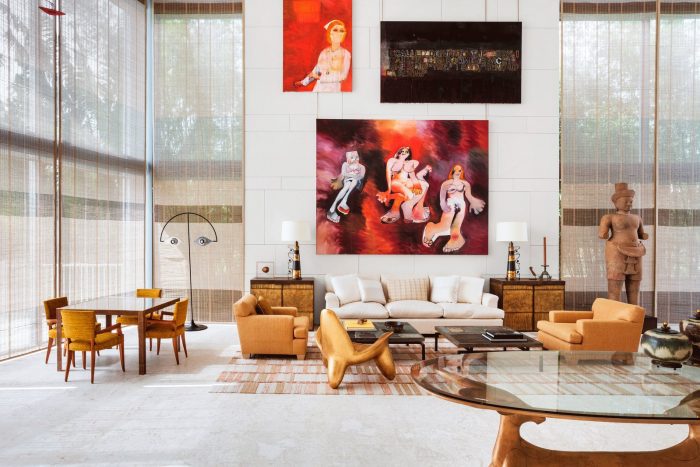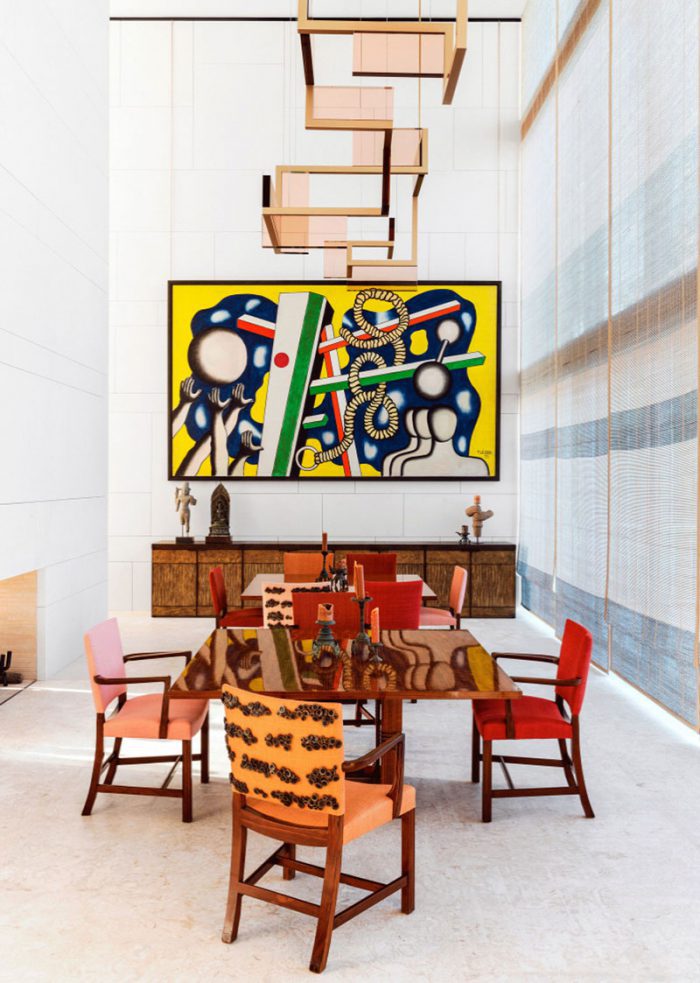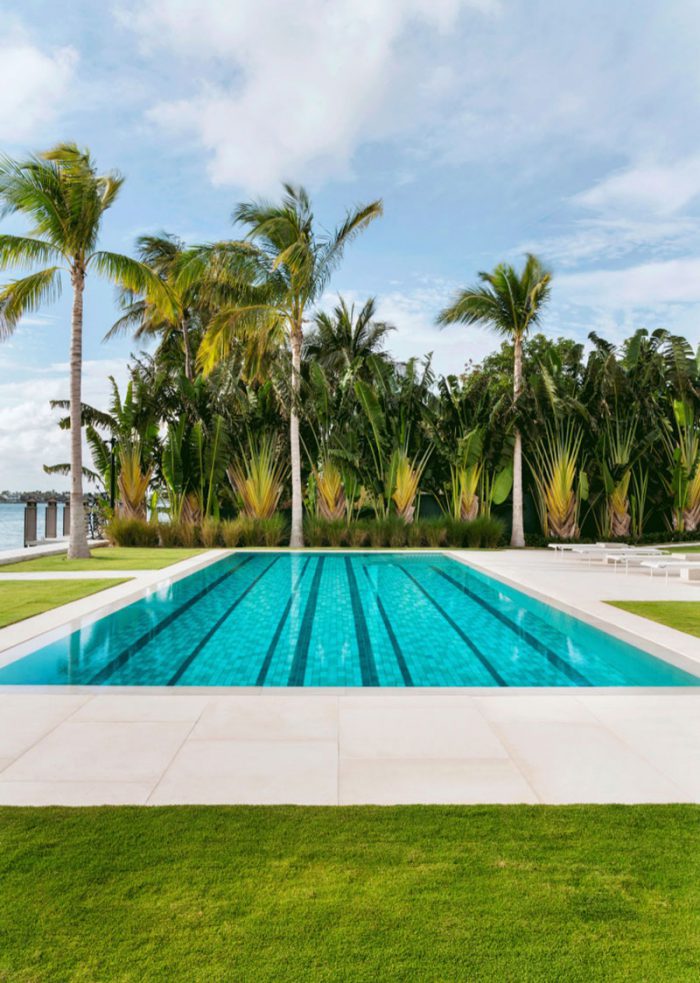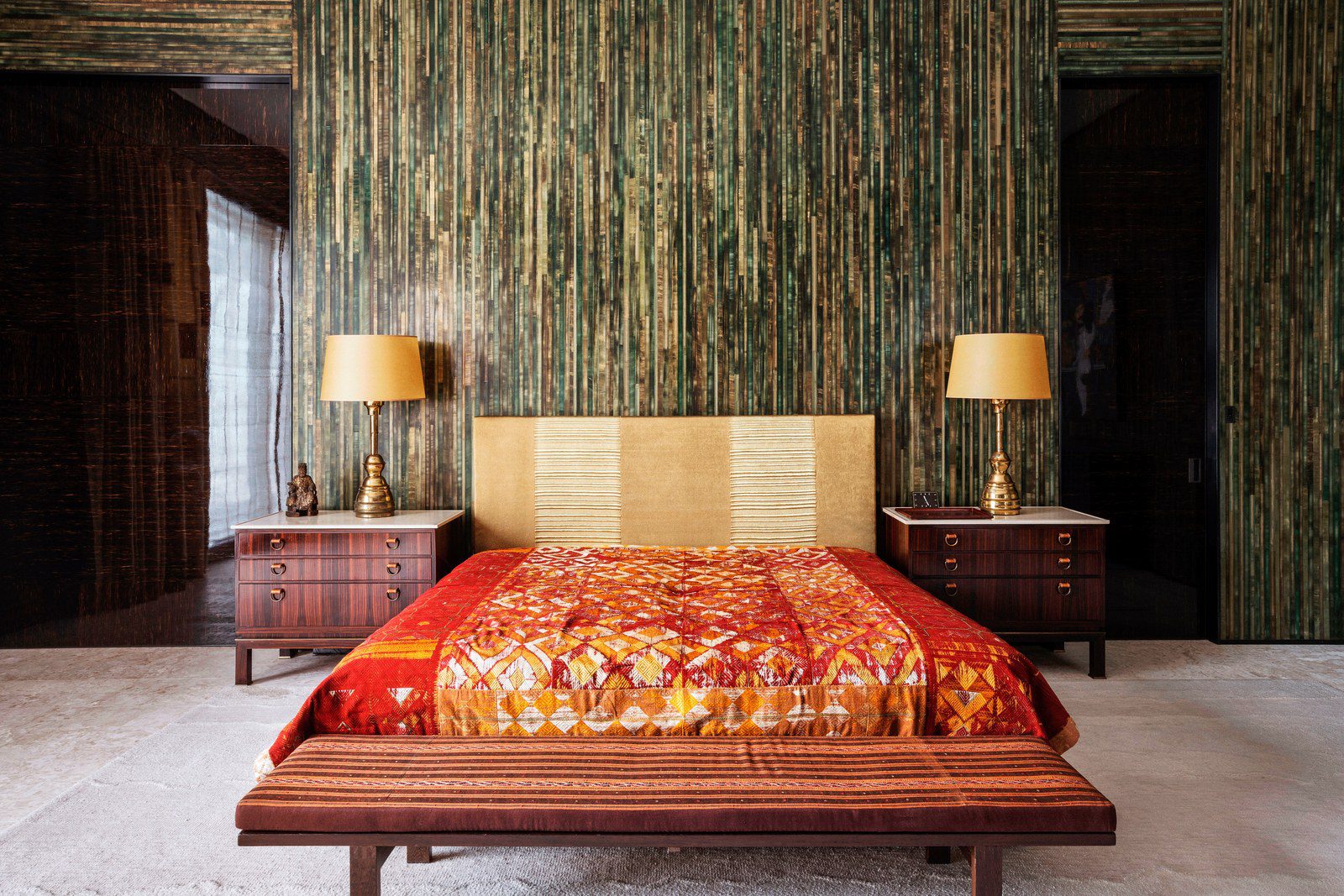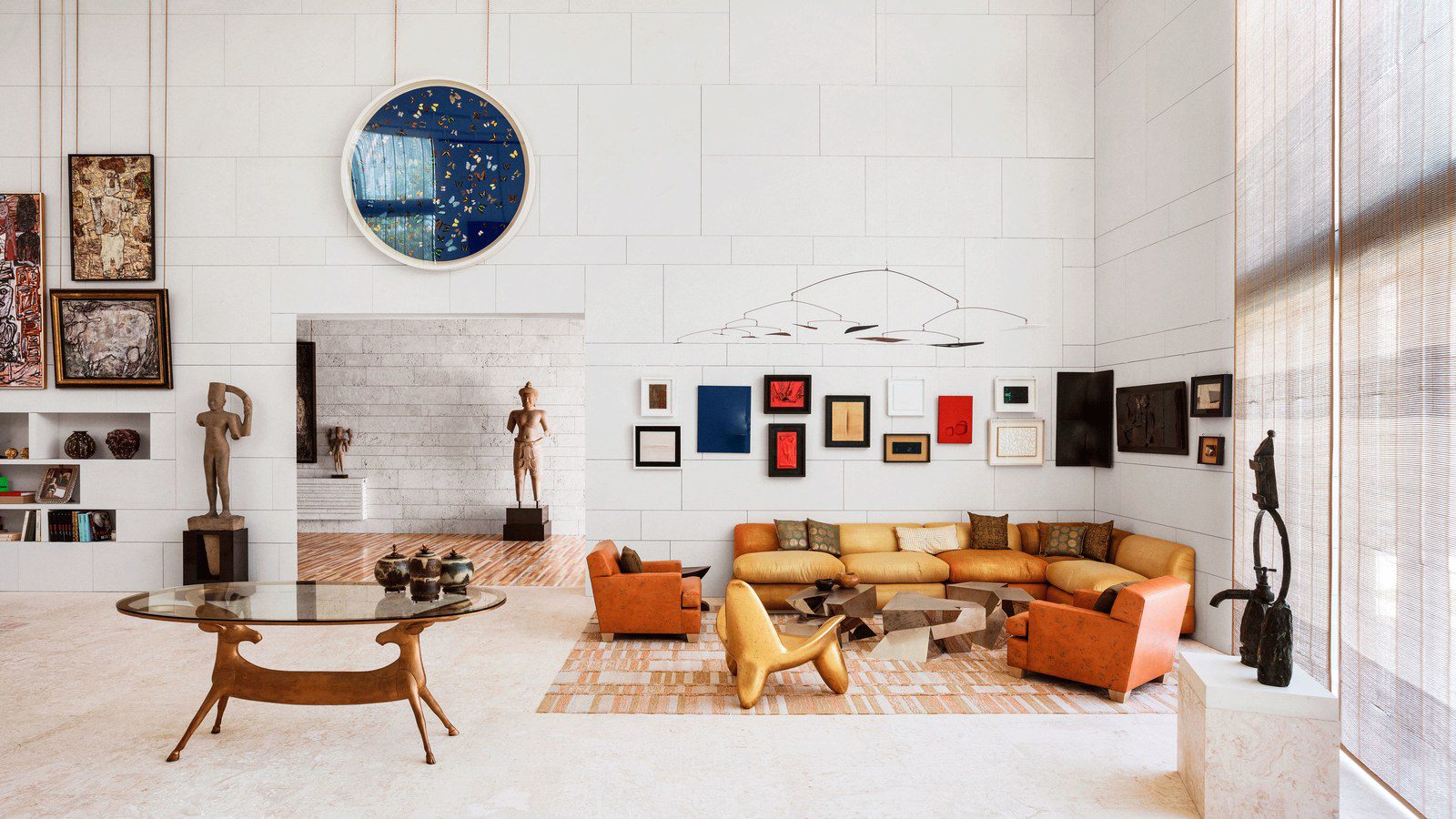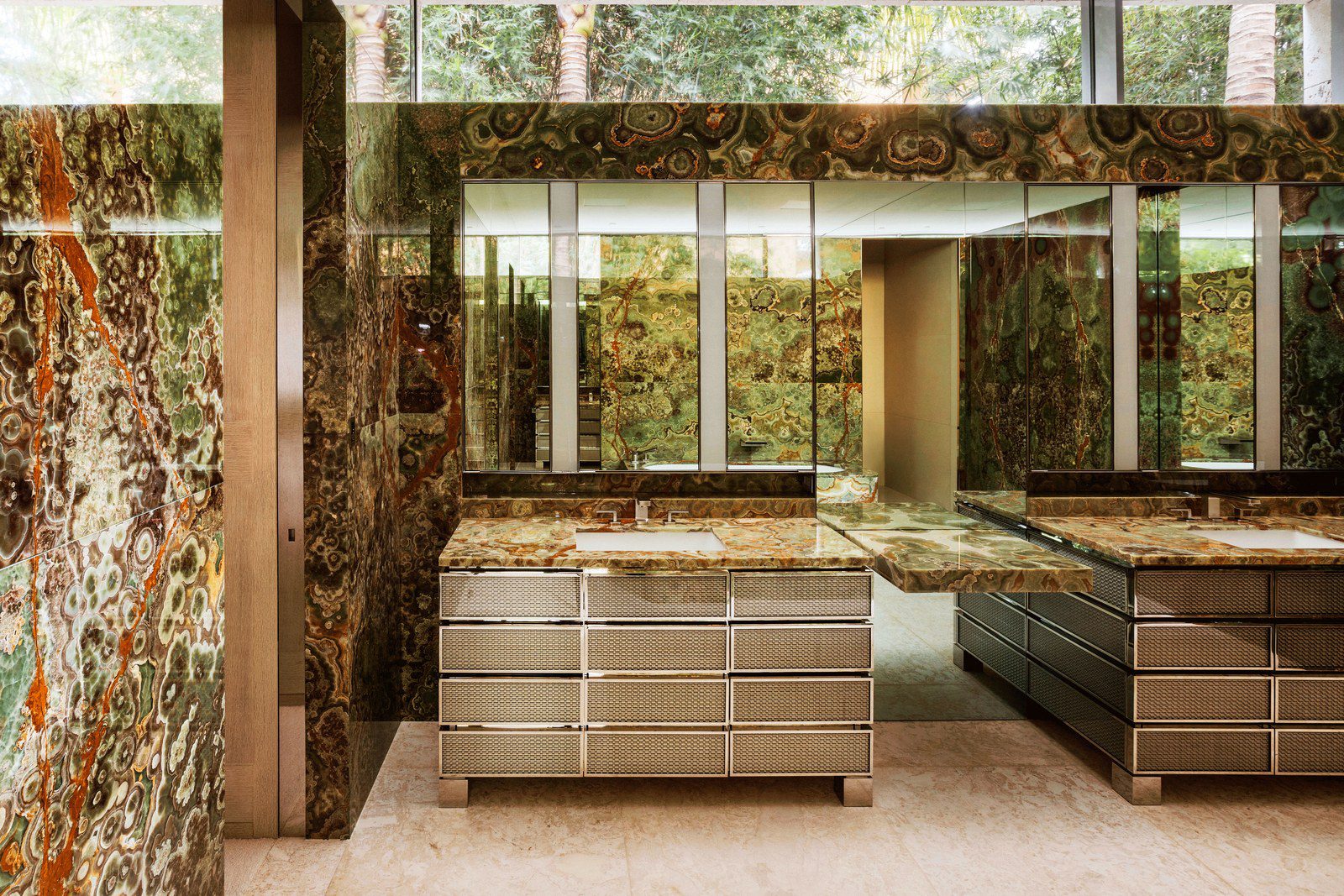AD100 Architect Peter Marino Designs An Art-filled Home For Contemporary Luxury In Miami’s Biscayne Bay
Date: 01.19.2019
Published On: Architectural Digest
When clients come to AD100 architect Peter Marino, they usually know what to expect, but they can never quite tell exactly what they will get.
Marino is a modernist who has demonstrated over and over again that the words simple and sumptuous are not antithetical. His ability to conjure luxury without excess has made him the architect of choice for developers and luxury brands, including Chanel, Louis Vuitton, and Fendi, for whom he creates shops so dazzling in their details, so sensual, and so spatially compelling that no website can compete, no matter how much free shipping is thrown in. And when he agrees to design a private home, the results may be more subtle, but they are no less spectacular.
Marino has had a close relationship with the couple who commissioned this house for decades. He designed their Manhattan and Greenwich, Connecticut, residences and went on to create a home for their daughter. For the couple’s Palm Beach estate, he had conjured a cluster of hip-roofed shadowy pavilions evocative of Polynesia (AD, January 2008) that showcased their collections of contemporary art, Art Deco furniture, and museum-quality Southeast Asian sculptures.
But Palm Beach had lost much of its appeal. One of their sons and his children lived tantalizingly close by in Miami, yet still too far away for them to see their grandchildren as often as they wished. Much of their great Asian art had been donated to museums. Plus, as one of the clients confided to the architect, “Miami is just so much hipper.”
The ideal location would be on one of the small man-made islands that dot Biscayne Bay, secluded but not far from all the activity of South Beach—or their son. And an island home would allow the couple to pull their boat (which, of course, Marino also designed) right up to a dock in front. But Miami’s private islands are hotbeds of celebrity and wealth, and prime property was not easy to come by. The site the couple ultimately acquired on Star Island was a long rectangle, with access to the water at one narrow end. The architect had to contend with what he describes as “a shoebox plot—a very difficult site. Only a couple of rooms could have water views. My solution to the shoebox site was more shoeboxes.”
His ingenious design features two rectangular “boxes,” a long, narrow two-story one consisting of a library and master suite, with guest rooms upstairs, and a shorter, wider box set farther back, containing a double-height living and dining area. Linking them is a spacious extended entry that immediately reveals views of the water. “I always think it is important in a seaside house that you see the water the minute you enter,” declares the architect.
The walls are limestone, “one of my favorite materials,” Marino says. Each volume is pierced with small, tall, or expansive windows. “I arranged the windows like I would the paintings on a wall. Straight-on views of water can become boring,” he adds. “The best water view I ever had was when I was young and lived on Beekman Terrace, with a long diagonal view down the East River.” To achieve a similar effect, the living room’s wall of glass, which looks onto the pool and the bay, is set at a sharp angle. “I angled it to the north, to minimize the heat.”
The double-height library was awarded the water view, not the master suite, which is darker, and moody—“I had to convince the clients to go for a dark bedroom. In hot climates, if you paint a room dark it stays cooler. And it’s more glamorous.” The dining area looks onto a walled green garden, another box that actually makes the space seem larger. The floor in the entry is a mosaic of silver, brown, and rust marbles that resembles a rug—and inspired the actual rugs in the living room. The baths are lined in boldly patterned stones in shades of yellow, orange, and green. “I picked the marbles and onyx,” says Marino, “then matched the palette of the rooms to them. I can’t tell you how much fun I had with the baths.”
The house also demonstrates another of Marino’s strengths—his connection to art. He is a consummate collector (he recently established a foundation to display his works, which range from Renaissance bronzes to contemporary works) as well as a patron. He has commissioned artworks for so many of his projects that they have filled a book. Here he worked with the owners’ Asian sculptures and paintings by Léger, Miró, Kiefer, and Prince, but was also able to commission pieces including Lalanne furnishings, and a geometric light fixture by Johanna Grawunder in the dining area, as well as a series of his own large bronze boxes.
Though very different from the couple’s shady, exotic former Palm Beach house—“This house is more about their contemporary art and an easy lifestyle,” he says—it is equally expressive of the owners’ lives and tastes. It is also, unmistakably, a Peter Marino production, a fresh new iteration of his signature, versatile talents.

